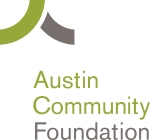That Alan Graham has a million ideas. After speaking with his yesterday, I’m even more compelled to bring back GivingCity in some way. (We announced yesterday that we’re suspending publication to pursue… revenue! What a concept!)
Here are a few ideas for stories in upcoming issues – and there will be upcoming issues – courtesy of Alan’s energetic mind.
1. Popularity Contest
There are rankings of the “most trusted” nonprofits in America. It’s a Harris Poll, I think. I’m not sure whom they’re polling, but one wonders if they’re popularity ranking is high among donors or among beneficiaries.
To do this story, I’d first have to find a ranking – or conduct a poll – of the most trusted or maybe most popular nonprofits in Central Texas. Then I’d take another poll. This second poll would require a reporter to visit a low-income area and ask residents to name the top five nonprofits in Austin.It’s a perfect magazine story, because it requires a little more on-the-ground research. I can picture including some video and photography of the low-income respondents. Data infographics, of course.
I can also picture including interviews of folks from United Way, People’s Community Clinic, Caritas, maybe another large nonprofit that serves low-income Austinites. I’d also want to get opinions from Greenlights and TANO to ask them, “Is it more important to be popular among donors or among clients?”
2. The Poor People Diet
The goal of this story would be to change people’s minds about why poor people eat so badly, and maybe inspire someone to finally do something about it.
The Capital Area Food Bank is a great resource for information and innovation in this area, so I’d turn to Kerri and Lisa there for guidance. From there, though, I’d ask a reporter to do a little drive-around, scanning some low-income areas for fresh food versus fast food. I can picture a short video of this. I’d also work with Torquil to create a map of grocery stores with a decent produce section on the East Side. Or maybe do a comparison of just HEBs-per-person on West Side versus East Side.
We’d include programs that are addressing this problem, and offer ways for you to help, of course. But it sounds like innovation is needed in this area (attention social entrepreneurs!).
3. People in Philanthropy
A list of just some of the people I’d like to profile:
Eugene Sepulveda – famous for caring, giving, innovating

Kerry Tate – one of Austin’s original business owners who care

David Davenport – less “just another white guy executive director” than you think

Kevin Patterson – he’s doing something great for all the arts nonprofits in Austin

Linda Medina – a young Hispanic leader to watch

John Thornton – so you want to start a nonprofit and a new media model…?
Filed under: About the magazine | Leave a comment »





